How to get rid of whitefly on tomatoes in a greenhouse: methods of struggle, means for processing
Sooner or later, every gardener who grows tomatoes in a greenhouse has to deal with this pest insect. Indeed, the whitefly is one of the most dangerous tomato pests in the greenhouse.
Next, let's talk about what kind of pest it is, how it is dangerous and, of course, we will analyze in detail how to get rid of whitefly on tomatoes in a greenhouse, how you need to process and spray greenhouse tomatoes on which this pest has wound up.
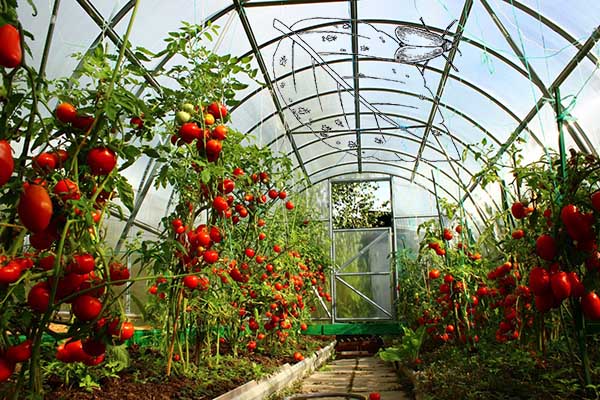
Content
- 1 What does a whitefly look like and what is dangerous?
- 2 Signs of the appearance of a whitefly in a greenhouse on tomatoes
- 3 Preventive measures against whitefly on tomatoes: how to protect tomatoes in a greenhouse
- 4 How to deal with whitefly on tomatoes: when and how to process - the best methods of struggle
What does a whitefly look like and what is dangerous?
The most famous whitefly species are:
- cabbage;
- tobacco (cotton);
- citrus;
- strawberry;
- greenhouse (greenhouse).
In this article, we are interested in exactly greenhouse whitefly (greenhouse)which damages tomatoes, cucumbers, peppers, eggplants and some flower plants growing in greenhouses, hotbeds and apartments.
The main characteristics of the greenhouse whitefly:
- Distributed everywhere in closed ground (including indoor conditions).
- In a greenhouse and a tropical climate, it develops year-round (gives 3-4 generations), in temperate latitudes, in the wild and in greenhouses - only in summer at freezing temperatures, in other words, the whitefly does not survive the winter.
The optimal conditions for active formation of whitefly colonies on tomato leaves are as follows:
- Air temperature - + 20-25 degrees.
- Relative air humidity - 60–80%.
In other words, the whitefly prefers moist and relatively shady places.
Thus, the main reason for the appearance of a whitefly in a greenhouse is a violation the regime of keeping and caring for tomatoes in the greenhouse, for example, excessive thickening of landings and lack of ventilation.
The life cycle of a whitefly, like most insects, consists of three main stages (in total, it lasts about 30-40 days): adults (adults), eggs, larvae (the phase lasts 10-14 days), puparia (4th instar larva, "false" cocoon). Then the cycle repeats and the second generation appears.
Interesting! The whitefly is characterized by a tiered distribution of individuals:
- on young leaves - adults (adults) and eggs,
- below are the larvae;
- on the lowest leaves - puparia and adults (adults) of the new generation.
Actually, the adult whitefly itself is an indirect pest. It is the females that lay their eggs, placing them on the underside of the leaves.
Appearance of an adult (imago) whitefly - The body is pale yellow, with two pairs of wings with a white coating, 1-1.5 mm long, resembles a mole.
The main pest is the whitefly larva, which immediately after leaving the egg attaches to the lower (inner) side of the leaf and begins to feed (sucking out juices from it - all nutrients).
Whitefly larva - oblong-oval, flat, pale green, 0.3–0.9 mm long.
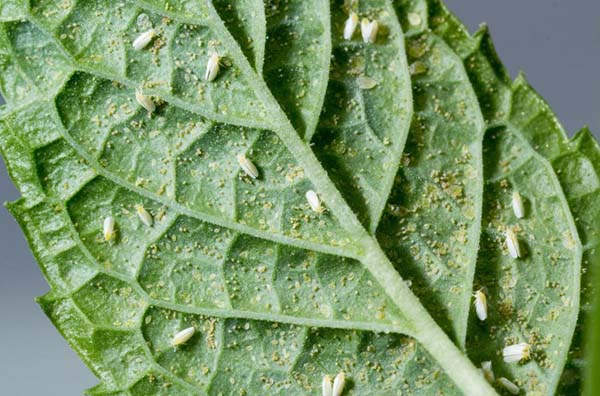
Thus, the main harm that the whitefly does during the larval stage is that insect sucks juice from tomato leaves, while also additionally secreting sugary sticky enzyme, which is a favorable breeding ground sooty mushroom ("mob").
It is very important to prevent the large-scale dominance of the whitefly in your greenhouse, otherwise it can simply destroy all your plants.
The greenhouse whitefly is also malicious carrier of many pathogens: yellow leaf curl virus (is one of the reasons rolling tomato leaves), leaf mottling virus, infectious chlorosis. Moreover, viruses can be transmitted by both adults (adults) - males and females, and in some cases larvae.
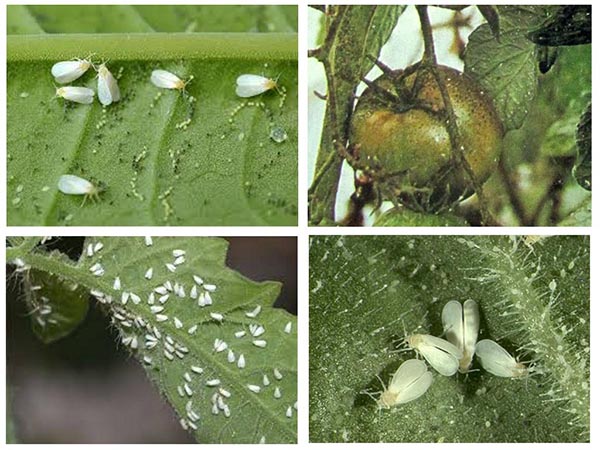
How does the pest get into the greenhouse?
Most often, the whitefly is brought into the greenhouse. along with purchased seedlings (which was grown in industrial greenhouses) or on clothessince it can easily get over from indoor plants (fuchsia, pelargonium, balsam, citrus), or with purchased greens (again grown in a greenhouse). Also whitefly are infected cut flowers. And often the pest enters the greenhouse together with purchased soil (which has already been used in greenhouses) or again through seedlings grown in contaminated soil.
Signs of the appearance of a whitefly in a greenhouse on tomatoes
After planting the seedlings in the greenhouse, after 10-14 days, it is necessary to inspect the tomato foliage for the presence of whitefly. So, if you touch the leaves and white butterflies instantly fly off them, this means that whiteflies have started on your tomatoes and, most likely, have already laid their eggs.
Advice! Use a magnifying glass when examining tomato bushes, as insects are very small.
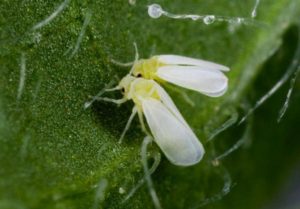
As we have already found out earlier, the whitefly larvae feed on the sap of young leaves, which significantly weaken the immunity of the plant (tomato). This is manifested in a slowdown in the growth and development of tomato bushes, and also negatively affects their flowering, fruit formation and the ripening period of fruits.
In addition to the direct harm caused by the pest itself, the condition of plants is negatively affected sooty mushroomsthat settle on the sugary secretions of whitefly larvae.
First, a sticky bloom (honeydew) forms on the foliage in the form of shiny white spots (a product of the larvae's vital activity), then they (spots) become covered with a sooty fungus ("black") and turn black (black bloom forms on them). As a result, it (the fungus) clogs the pores of the leaves, which hinders the processes of respiration and photosynthesis. As a result, the affected leaves turn yellow, dry up and fall off.
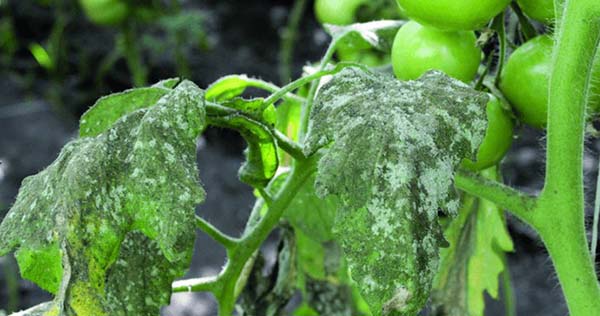
Thus, due to the harmful activity of the whitefly (namely, its larvae), the tomatoes begin to hurt, lag behind in growth, which leads to uneven ripening of the fruits, as well as to a change in the color of the fruit core from pink or red to white. As a result, the marketable quality of the fruit decreases markedly.
By the way! In terms of its negative effect, the whitefly resembles in many ways aphids.
Preventive measures against whitefly on tomatoes: how to protect tomatoes in a greenhouse
Remember! It is easier to prevent any problem than to fix it later.
To prevent the appearance of a whitefly, it is recommended to perform the following preventive measures:
- Conduct regular preventive examinations for the presence of a pest in the greenhouse.
- Promptly destroy weeds.
- Observe the conditions for growing the culture.
By the way! The site has detailed material about how to properly grow and care for tomatoes in a greenhouse.
- Correctly use and maintain the greenhouse, namely:
- every fall and / or spring should be done cleaning (taking out all vegetation), including steaming or freezing the soil in the greenhouse (if you are a resident of the southern region);
By the way! How to do it right prepare the greenhouse in spring for the planting season, told in this material, a process in the fall — in this article.
However, it should be borne in mind that, unlike the spider mite, the whitefly on the surface, in the greenhouse, is not preserved, only in the ground.
- make full ventilation in the greenhouse;
- carry out other preventive measures and use special protective equipment and methods of struggle.
Advice! To protect greenhouse tomatoes, it is optimal to use biological agents (parasites and predators) and glue traps. If they do not help to cope with the number of whiteflies, then use chemical agents.
Video: how to get rid of a whitefly in a greenhouse in autumn
How to deal with whitefly on tomatoes: when and how to process - the best methods of struggle
There are several ways to deal with whitefly in a greenhouse on tomatoes:
- mechanical methods (glue traps);
- biological methods (populating the greenhouse with entomophagous insects);
- chemical methods (preparations against insect pests - insecticides).
And also folk remedies, decoctions of various herbs, but it should be said right away that they are very ineffective ... very much.
Indeed, getting rid of a whitefly in a greenhouse is quite difficult. Therefore, it is imperative that you regularly carefully inspect your greenhouse tomatoes (namely, the lower or back side of their leaves) in order to detect its appearance as early as possible and prevent it from multiplying greatly. If you see at least a small number of adults, then proceed with processing immediately.
Advice! Use all possible methods to effectively control whitefly. You will hardly be able to completely destroy the whitefly in the greenhouse, but it is possible to reduce its number and reduce harmfulness.
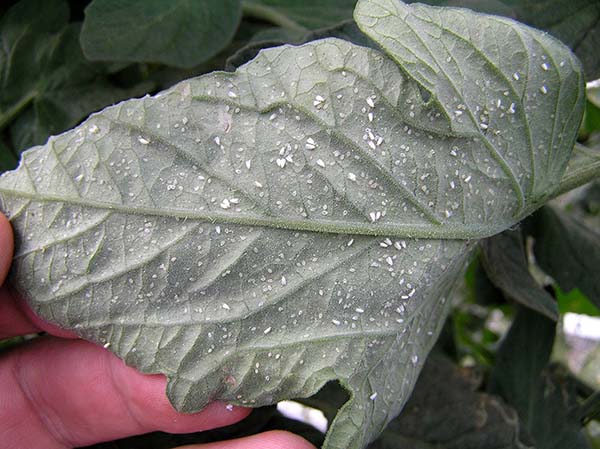
Video: whitefly and methods of dealing with it
Mechanical methods
The fight against whitefly in the greenhouse can be successfully carried out with the help of yellow sticky tapes, glue trapshung in the greenhouse, and fumigators.
Note! Naturally, such measures will only help you get rid of flying adults. If they have already laid eggs, only chemical and biological means of control are used against the larvae.
You can purchase adhesive tapes or glue traps from your local hardware store, gardening store, or make your own. 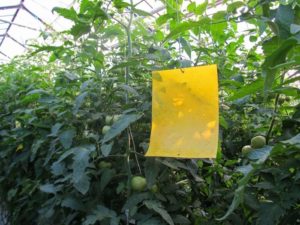
To make a trap for a whitefly yourself, with your own hands, you need to cover a sheet of cardboard or plywood (measuring about 20 by 20 cm or more) with a layer of yellow paint, and then apply an adhesive base, for example, from honey, technical petroleum jelly, solid oil, castor or any other mineral oil, glue from rodents. Then hang this yellow sticky cardboard on a rope (twine) at the level of the tops of the plants.
By the way! According to experts, it is better to use cardboard to create a whitefly trap. yellow color, since this shade is able to attract insects. As a result, whitefly butterflies will fly to bright squares and stick to their surface.
It is believed that against whitefly it is effective to use fumigator (commonly used against mosquitoes and flies). To do this, you must turn on the device to the power grid (by extending the extension cord into the greenhouse) and completely close all doors and ventilation vents. A clear disadvantage of using this tool is the fact that, in addition to the whitefly, the fumigator destroys all other inhabitants of the greenhouse, including useful ones.
Advice! You can also mechanically get rid of the pest simply periodically irrigating tomato bushes with plain water, and then washing the leaves with soapy water.
Biological methods
To combat the whitefly, you can use insects that feed on this pest (they are also called entomophagous insects).
This option is especially relevant for gardeners who exclude any use of chemicals.
These include ladybug, lace-eyed fly, rider beetle.
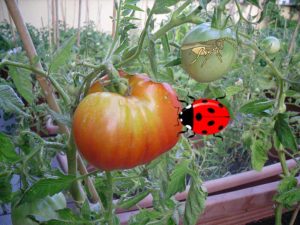
But it is especially effective to release parasitic insects: encarsia (Encarsia Formosa) in the amount of 1-3 individuals per 1 square meter or macroflorus bug - 3-5 individuals per 1 sq.m. with an interval of about 2 weeks (i.e. 2 times).
You can buy biological enemies of the whitefly in specialized stores or on Internet resources.
Chemicals
Naturally, it is easiest to get rid of whitefly on tomatoes in a greenhouse most quickly and completely with the help of chemicals (insecticides).
A few rules and tips for spraying tomatoes from whitefly:
- The solutions should be prepared only according to the instructions on the packages, following the dosage recommendations (no less and no more).
- It is also necessary to use solutions only according to the instructions.
It should be processed either early in the morning, before the first rays of the sun appear, or late in the evening, after sunset. If during the day, then only in cloudy weather.
- Be sure to pay attention to the waiting time after processing (after how long you can eat the fruit).
Important! Systemic drugs have a long waiting time (up to 20 days), i.e., when tomatoes ripen, they can no longer be used.
- Be sure to pay attention to the duration of the drug, i.e. how long it will protect your plants from the pest.
- To improve the effect of the treatment, you can mix drugs with different active ingredients (preferably of different chemical classes).
- As a rule, the first treatment is carried out at the first appearance of the pest, and reapplication is carried out at intervals of 7-14 days.
As a result, you will have to carry out several treatments. most drugs work only against adults (adults), and they have no effect on larvae.
- It is necessary to carry out processing very carefully, especially to spray the inner (lower) part of the leaves.
- In order not to cause addiction to the pest, you should periodically alternate preparations, or rather their active substances.
Note! Many drugs from different companies have the same active ingredient.
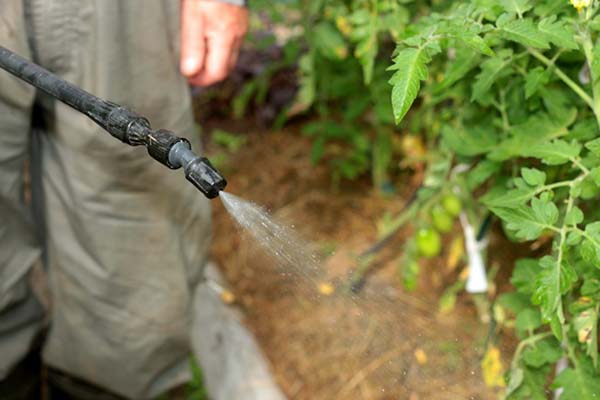
The most popular and effective drugs (insecticides) for getting rid of whitefly on tomatoes are (the active ingredient, the method of penetration or the nature of the effect and the chemical class are given in brackets):
- Alatar (Malathion (Karbofos) and Cypermethrin, insecticide of contact-intestinal action, class pyrethroids + organophosphorus compounds (FOS);
- Aliot (Malathion (Karbofos), enteric-contact insectoacaricide, class of organophosphorus compounds (FOS);
- Aktara (Thiamethoxam (Aktara), systemic insecticide of intestinal action, class of neonicotinoids);
Note! Used for watering the soil under the plants.
- Actellic (Pirimifos-methyl (Actellic), systemic intestinal contact insectoacaricide + fumigant, class of organophosphorus compounds (FOS);
- Biotlin (Imidacloprid, a systemic insecticide for intestinal action, class of neonicotinoids);
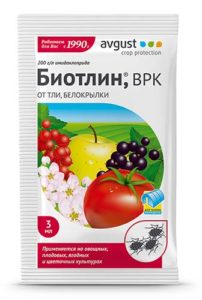
- Voliam Flexy (Thiamethoxam (Aktara) and Chloranthraniliprol, a systemic enteric insecticide of the neonicotinoid class + other substances);
- Confidor (Imidacloprid, a systemic insecticide of contact-intestinal action, a class of neonicotinoids);
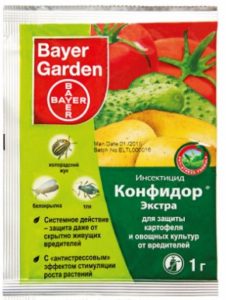
- Tanrek (Imidacloprid, a systemic insecticide of contact-intestinal action, a class of neonicotinoids);
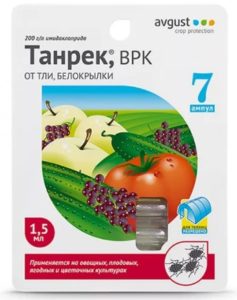
- Inta-Ts-M (Malathion (Karbofos) and Cypermethrin, insecticide of contact-intestinal action, class pyrethroids + organophosphorus compounds (FOS);
- Intavir (Cypermethrin, insecticide of contact-intestinal action, pyrethroid class);
- Karate Zeon (Lambda Cyhalothrin, insecticide of contact-intestinal action, pyrethroid class);
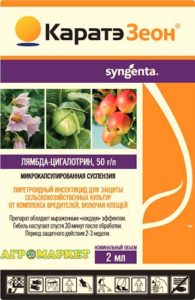
- Spark golden (Imidacloprid, a systemic insecticide of contact-intestinal action, a class of neonicotinoids);
- Talstar (Bifentrin (Talstar), an insecticide of contact-intestinal action, pyrethroid class);
- Teppeki (Flonicamide, has systemic and translaminar activity, chemical class - pyridine carboxamides);
- Bison (Imidacloprid, a systemic insecticide of contact-intestinal action, a class of neonicotinoids).
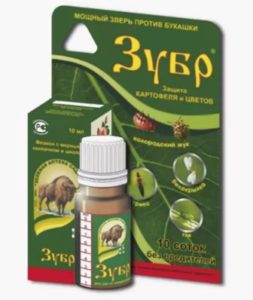
Interesting! There are also biological agents against insect pests such as Akarin, Fitoverm, Bitoxibacillin, Aktofit, Verticillin. However, they are not very effective against whitefly.
Although the author of the next video claims the opposite (regarding Fitoverm).
Video: how to deal with whitefly
Folk remedies
If the defeat of tomatoes in a greenhouse by a whitefly is not very strong, then, in order not to use chemistry, you can try using folk remedies, which, as a rule, use various infusions of herbs, garlic, etc.
By the way! Folk remedies are most often used to get rid of whitefly larvae, not adults.
- Turpentine + camphor oil (10%).
Recipe from Procvetok Channel for 10 liters of water (basic):
- turpentine gum (up to 1.5 l - for the most difficult cases for plants with dense leaves, up to 1 l - for difficult cases for more delicate plants (tomato, cucumber), 0.2-0.5 l - for prevention on all plants and in the case of single pests)
- laundry or green soap - up to 50-150 g (depending on the amount of turpentine),
- an aqueous solution of ammonia (25%) - 1-2 tablespoons - to enhance the dissolving effect of turpentine.
Modifications:
- Turpentine can be replaced (up to 50%) with 10% camphor oil.
- You can add 50-100 ml of tincture of mint, eucalyptus, pine extract to the solution.
- You can replace it with decoctions of the same plants - 100-200 g of dry plants are boiled in a liter of water, the decoction is infused and added to the turpentine solution.
- Benzyl benzoate - 20-30 ml per 1 liter of solution.
- It is very good to add nicotinic acid to the solution to restore plants from damage by pests - 1 tablet of 50 mg for each liter of solution (or 3 grams of dry or 12 grams of raw yeast).
Shed or spray the plants with a similar composition in the evening, on well-shed soil.
Expectation period: if without benzyl benzoate, then there is practically none. But first you just need to remove the fruits, then process and wait at least 24 hours. If with benzyl benzoate, it is better to wait 2-3 days. It is clear that fruits and vegetables must be thoroughly washed after any treatments, even if it is just laundry soap or serum.
- Garlic tincture;
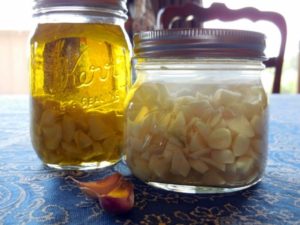
- Dandelion infusion;
- Wormwood infusion;
- Infusion of yarrow;
- Tobacco infusion.
Some more summer residents against whitefly carry out fumigation of greenhouses with tobacco sticks (not sulfur, but tobacco).
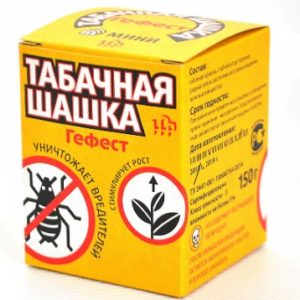
You can also try to artificially lower the temperature in the greenhouse (as you remember, the favorable temperature for the whitefly is + 20-25 degrees), opening the greenhouse at night, putting up windows and doors for ventilation.
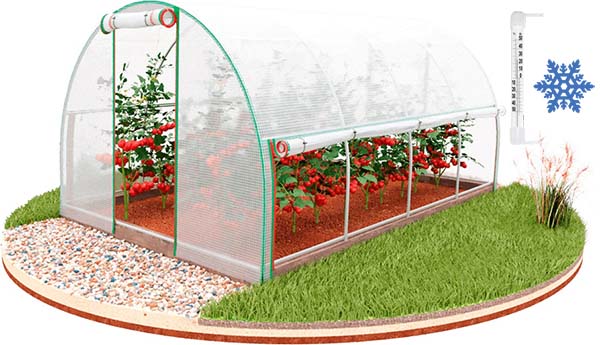
Of course, it will not be possible to completely destroy the pest by such methods, but it is quite possible to reduce the population.
Thus, now you know that first of all it is necessary to follow the basic rules of care and cultivation of greenhouse tomatoes, as well as to carry out preventive measures. But in any case, you will most likely have to use one of the above methods of dealing with whitefly on tomatoes.
Video: whitefly remedies


For smoke bombs, I can recommend a few more good options. These are insecticidal checkers: "Quiet Evening", "Samuro" and "City". I was personally convinced of their effectiveness against whitefly.
And where did you get them, if not a secret?
Secret